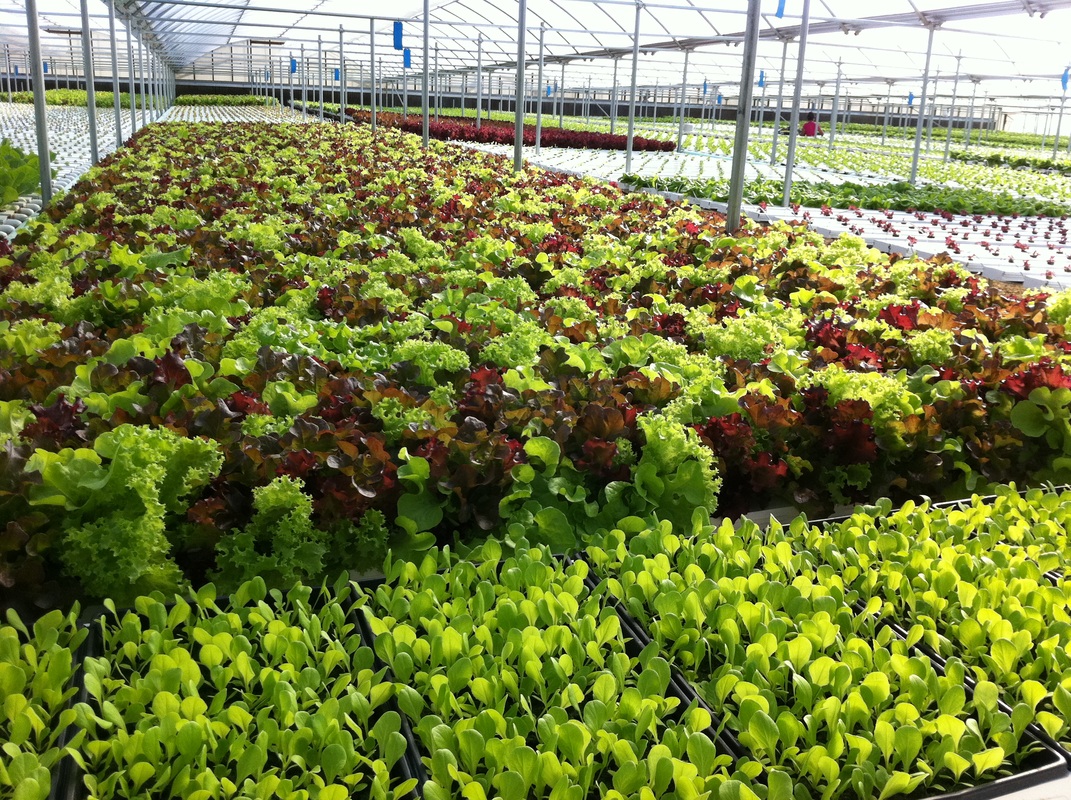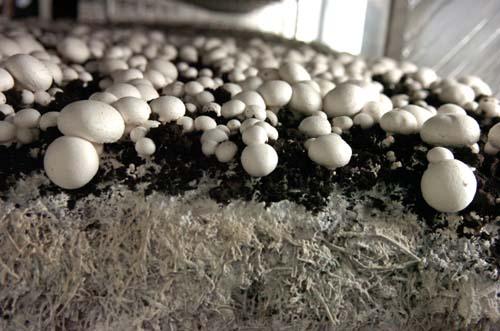Answering the question in terms of costs necessitates the entire picture of yield and price per bushel, otherwise a farmer would have an incomplete picture by which to make business decisions that impact the sustainability of the family farm. The other critical piece that folks don't seem to grasp is the market demand in various regions. Farmers grow what there is demand for, plain and simple. What markets are available in our region and the products they want from farmers. Economics 101. We don't grow what we can't sell. For us, there is greater demand for GMO derived feed and imgredients than there is for nonGMO feed and ingredients. Strange isn't it? You haven't heard that before have you? The media would lead you to believe otherwise, but the media aren't connected to the farm community or its markets. If you are believing only what you read in the media, then you are not seeing the entire picture, just a very small slice of their pie, so to speak.
The data below is our data, no one else's data. We can't make sustainable business decisions based on hypotheticals or someone else's data. We make decisions for our farm based on our outcomes and experiences. These figures are not everyone else's figures. These figures do not extrapolate to our neighbors or farmers in other regions or states. These figures are what drives our decision making and choices for the coming year. If the market changes, we change our decision making process. If yield or costs change, we change our decision making process. In the end, our goal is to have healthy soils producing healthy foods and have a sustainable family farm to leave for the next generation.
GMO vs NonGMO Production Comparison
Will Rogers is credited with the quote: "The farmer has to be an optimist or he wouldn't still be a farmer." Optimistically, each winter we review our harvest data comparing our crop yield by variety to our cost of production for that crop that season, in consideration of the type of growing season we had, in order to decide what seeds to purchase for the coming season.
Since 1998, we have been growing both GM and non-GM corn and
soybeans. (We don’t actually use the term “GM” or “GMO” since all domesticated
crops have been genetically modified, but am using the acronym for the sake of
this audience). We run the numbers ever year for every variety and every crop
because that’s the only way to run any successful business. We collect the data
on what worked and what didn’t work and make changes and improvements or what
many businesses call “continuous quality improvement.”
2014 Corn Production Non-Irrigated
Cost Per Acre
|
Non BT Corn
|
BT Corn
|
Seed
|
$65
|
$114
|
Fertilizer
|
$123
|
$123
|
Herbicide
|
$40
|
$21
|
Crop Insurance
|
$40
|
$40
|
Fertilizer Application
|
$7.50
|
$7.50
|
Planting
|
$28
|
$28
|
Nitrogen Application
|
$9.50
|
$9.50
|
Pesticide Application
|
$20.00
|
$9.00
|
Harvest
|
$28.00
|
$28.00
|
Hauling
|
$25.00
|
$25.00
|
Drying
|
$60
|
$60
|
Land Rent
|
$150
|
$150
|
Total Cost of Inputs
|
$596/ac
|
$615/ac
|
BPA=bushels per acre
|
186 BPA
|
221 BPA
|
Current cash price/bu
(Salisbury, MD)
|
$4.01
|
$4.01
|
Gross Income/ac
|
$745.86
|
$886.21
|
Net Income Difference
|
$149.86
|
$271
|
2014 Soybean Production Non-Irrigated
Cost Per Acre
|
Non-GMO for Food
|
GMO for Feed
|
GMO for Seed
|
GMO High Oleic
|
|
Seed
|
$41
|
$53
|
$53
|
$53
|
|
Fertilizer
|
$21
|
$21
|
$21
|
$21
|
|
Herbicide
|
$40
|
$18
|
$18
|
$18
|
|
Crop Insurance
|
$32
|
$32
|
$32
|
$32
|
|
Fertilizer application
|
$7.50
|
$7.50
|
$7.50
|
$7.50
|
|
Planting
|
$20
|
$20
|
$20
|
$20
|
|
Pesticide application
|
$24
|
$18
|
$18
|
$18
|
|
Harvest
|
$28
|
$28
|
$28
|
$28
|
|
Hauling
|
$9
|
$9
|
$9
|
$9
|
|
Land Rent
|
$150
|
$150
|
$150
|
$150
|
|
Total Cost of Inputs
|
$372.50
|
$356.50
|
$356.50
|
$356.50
|
|
Bushels/Ac (BPA)
|
35 BPA
|
50 BPA
|
50 BPA
|
55 BPA
|
|
Price/Bushel
|
$12.25
|
$9.60
|
$11.50
|
$11.25
|
|
Gross Income
|
$472.5
|
$480
|
$575
|
$619
|
|
Net Income Difference
|
$100
|
$124
|
$219
|
$263
|
|
The first year we planted Bt corn was 2000. As you can see
from the chart below, it has out-performed conventional corn every single year.
What is most noteworthy however, is the importance of its performance in
unfavorable growing years. We had drought conditions from 2010-2012. A
healthy crop is a more productive crop and in bad years, that can make the
biggest difference to the financial sustainability of the family farm. I previously had included our organic corn data in this chart but have since removed it. We grew conventional, biotech, and organic corn simultaneously but stopped our organic production in 2011. It average was below 50 bushels per acre and makes a very poor comparison. We decertified our organic ground and for that reason, I no longer include the data.
Corn (non-irrigated)
|
2000
|
2004
|
2010
(slight drought) |
2011
(drought & hurricane)
|
2012
(drought)
|
2013
|
2014
|
Biotech Acres
|
10
|
276
|
573
|
397
|
464
|
290
|
275
|
Avg Yield BPA
|
171
|
182
|
110
|
44
|
111
|
214
|
220
|
Conventional Acres
|
647
|
415
|
195
|
213
|
261
|
75
|
200
|
Avg Yield BPA
|
165
|
167
|
91
|
18
|
57
|
202
|
186
|
Biotech/Bt
Yield Advantage |
6.4
|
15
|
19
|
26
|
54
|
12
|
34
|
Price/Bu
|
$2.35
|
$2.55
|
$5.18
|
$6.47
|
$7.40
|
$4.41
|
$4
|
Net income difference
Due to yield
|
$15.04
|
$38.25
|
$98.42
|
$168.22
|
$399.60
|
$53
|
$136
|
Likewise in our soybean production history, we have consistently experienced a better yield in our GM soy over our non-GM soy. We grow four “classes” of soy: soy for food, soy for feed, soy for seed, and a specialty GM bean High Oleic (HO) acid beans. The HO beans go for feed but the oil that is extracted is used in baking and frying which eliminates the trans-fatty acids from using hydrogenated soybean oil as an ingredient. These beans are kept segregated and true to their variety in order to have the highest quality HO oil from the extraction process.
Soybeans (dryland)
|
1998
|
2000
|
2005
|
2010
(slight drought)
|
2011
(drought
& hurricane)
|
2012
(drought)
|
2013
|
2014
|
Biotech Acreage
|
195
|
322
|
416
|
270
|
522
|
527
|
200
|
300
|
Yield bu/a
|
54.2
|
50.3
|
53.5
|
46
|
37
|
43
|
48
|
55
|
Conventional Acreage
|
156
|
184
|
213
|
306
|
750
|
675
|
175
|
100
|
Yield bu/a
|
48.2
|
43.2
|
46.3
|
36
|
34
|
36
|
25
|
35
|
Yield Difference
|
6 bu
|
7.1 bu
|
7.2 bu
|
10 bu
|
3 bu
|
7 bu
|
23
|
20
|
Price/Bushel
|
$6.90
|
$6.62
|
$7.25
|
$11.30
|
$12.52
|
$14.55
|
$13.55
|
$11.25
|
Income Difference/
Acre |
$41.40
|
$47.00
|
$52.20
|
$113.00
|
$37.56
|
$101.85
|
$312
|
$225
|
Even when there is a premium involved with growing a non-GM
grain, due to better yields, GM has out-performed non-GM on our farm every
year. We have experienced higher yields in all of our GM crops in the nearly 17
years we have been using the seeds. We grow what we have market access to sell
in our region. Our choice to buy seed is based on the success of various seeds
we have tried and well as University research conducted in our area. We don’t
pay attention to data that comes from other growing regions in the US because
it generally isn’t relevant to the conditions we experience. We use a “prove
it” mentality in that we will give a seed a try on a limited number of acres
and do our own compare and contrast to our other fields. Our decision making is
balanced by diversity of the markets we can access, the demand within those
markets, and the productivity that we have seen for ourselves to justify which
type of seeds to plant each and every year.
As I said at the beginning, these are our costs and our production figures. Don't assume they are the same for all farmers. They are not.


















.png)



